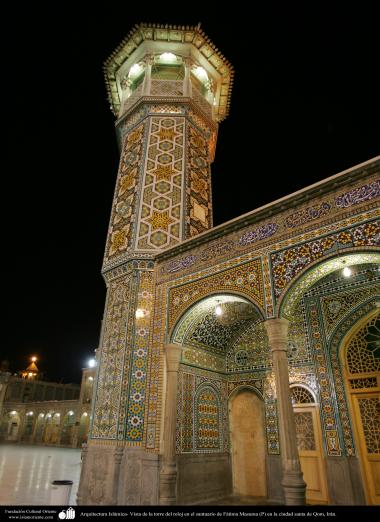-
Islamic Art
-
Arquitecture
-
Islamic Arquitecture
- Arte & Islamic Architecture in painting
- Islamic mosaics and decorative tile (Kashi Kari)
- Islamic Mogarabas (Moqarnas Kari)
- Arte con espejos incrustados (aine kari)
- City of Isfahan - Iran
- City of Mashhad - Iran
- City of Shiraz - Iran
- From other cities of Iran
- Mecca and Medina – Saudi Arabia
- City of Agra - India
- Persian Preislamic Arquitecture
-
Islamic Arquitecture
-
Persian Miniature
- Miniatures by Prof. M. Farshchian
- miniatures by Hayy Agha Emami
- Miniatures by Prof. Husein Behzad
- Miniatures by Professor M. Mehregan
- Miniatures by different artists
- Miniatures of the Book “Muraqqa-e-Golshan
- Miniatures of books of Poet Sadi, “Bustan”, “Golestan” and “Colections”
- Miniature of the books of Poet Nezami Ganjavi
- Miniatures of different books
- Miniatures of the Book “Zafar Name Teimuri”
- Miniatures of different editions of Shahname by Ferdowsi
- Miniature in Mural
- Tazhib (Ornamentation of valuables pages and texts)
-
Islamic Calligraphy
- Kufic Calligraphy – Kufic Style
- Islamic Calligraphy – “Diwani” Style
- Islamic Calligraphy – “Naskh” Style
- Islamic Calligraphy – “Nastaliq” style
- Islamic Calligraphy – “Muhaqqeq” and “Roga” Styles
- Islamic Calligraphy “Zuluz” Style
- Islamic Calligraphy – “Tawqi” style
- Calligraphy of Bismillah
- Quranic Calligraphy
- Illustrative Calligraphy
- Antique editions of the Holy Quran from early times to XIII hiyri (XIX d.C).
-
Handicrafts
- Handicrafts – traditional blocking (stamping) (Chape Qalamkar)
- Handicraft – Marquetry and Decoration of objects (Jatam Kari)
- Handicraft – Enamel (Mina Kari)
- Handicraft – Textile Art – Persian Carpets
- Persian Handicraft – Bone Painting
- Handicraft – Engraved in metal (Qalam Zani)
- Handicraft – Taracea (Marquetry)
- Weapons and decorated enamelware
- Paintings
- Islamic Pottery- Islamic ceramics
-
Arquitecture
- Muslim Woman
- Holy Places of Islam
-
Poster
- Caricature
العمارة في العالم الإسلامي هي واحدة من أكبر التأثيرات على الجسم من المواد هو ظهور الحقيقة الفنية. تاريخيا، والهندسة المعمارية هنري الأولى التي من شأنها أن تكون متوافقة مع المفاهيم الإسلامية، والمسلمين هي موضع ترحيب. مآذن هي تعتبر عنصرا أساسيا في الفن الإسلامي والهندسة المعمارية. مآذن الأصلي نمط والأبراج وساحة قصيرة قبل الإسلام في سوريا للمعابد أو نوايا الكنيسة بنيت، لكنه أضاف المعماريين المسلمين الطول ومباني خطوة نوع متعدد الطوابق المنارات الرومانية أقرب . المآذن الأولى حوالي عام 45 م، بناء على طلب من الحكومة العراقية "زياد بن أبيي" عقدت، في المسجد. بعد فترة وجيزة، بناء على أوامر من حاكم مصر، وأربع مآذن المسجد "عمرو" في "الفسطاط" وانضمت وأثناء وجوده في مصر وأضيفت هذه مآذن المساجد الأخرى مآذن قاعدة أربعة عناصر رئيسية، واطلاق النار، والغطاء ويتم تشكيل الرأس. في جميع أنحاء العالم الإسلامي في كثير من الأحيان تتألف مآذن نفس المكونات، ولكن مع تأثير الطراز المعماري الوطني في كل منطقة زيارتها بطريقتها الخاصة.












